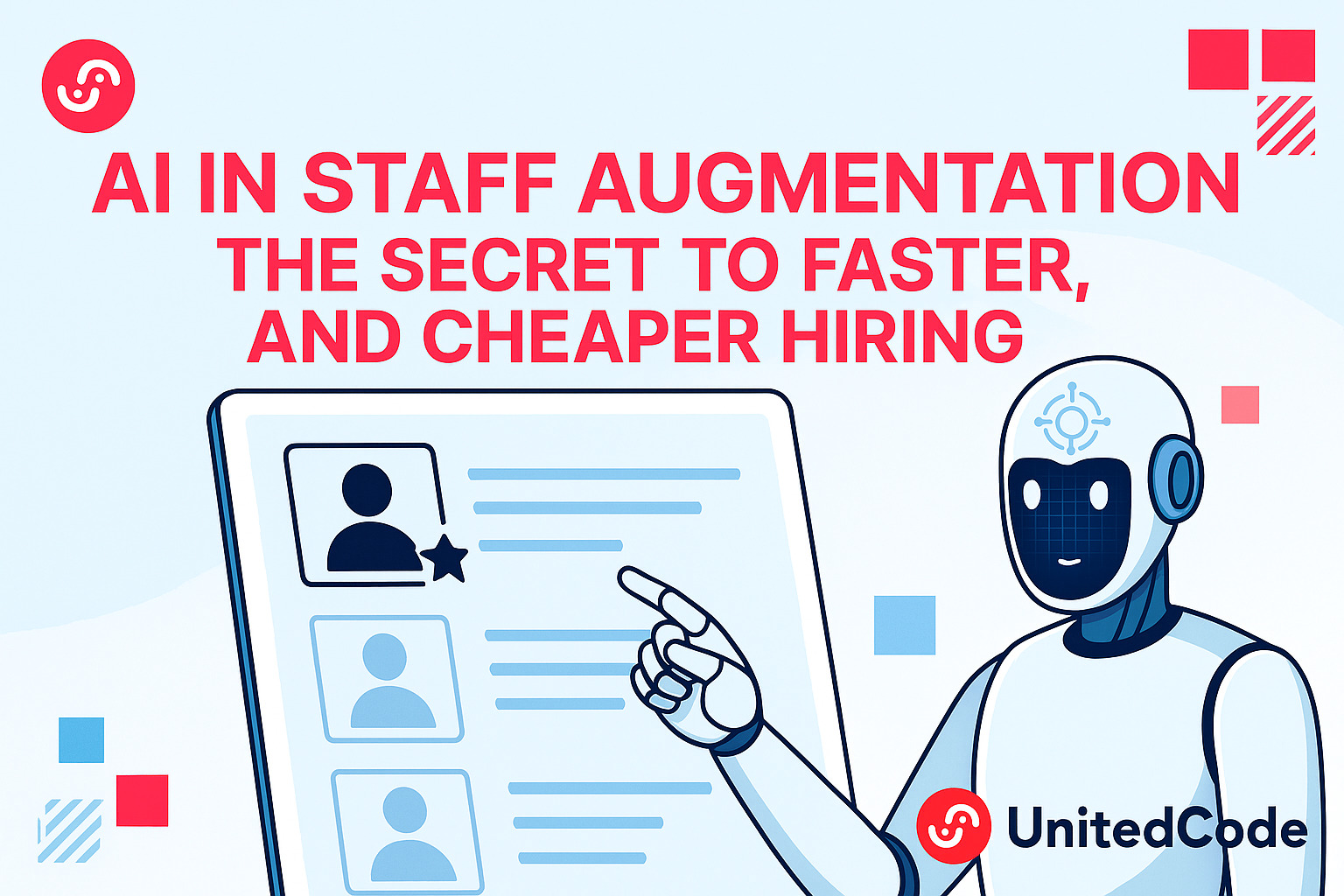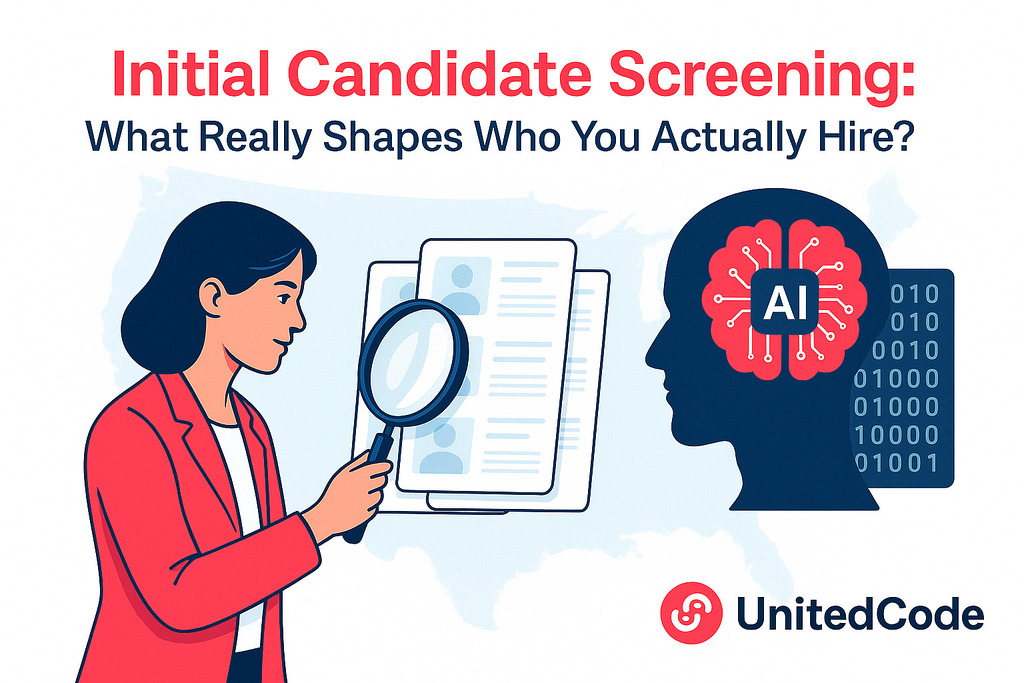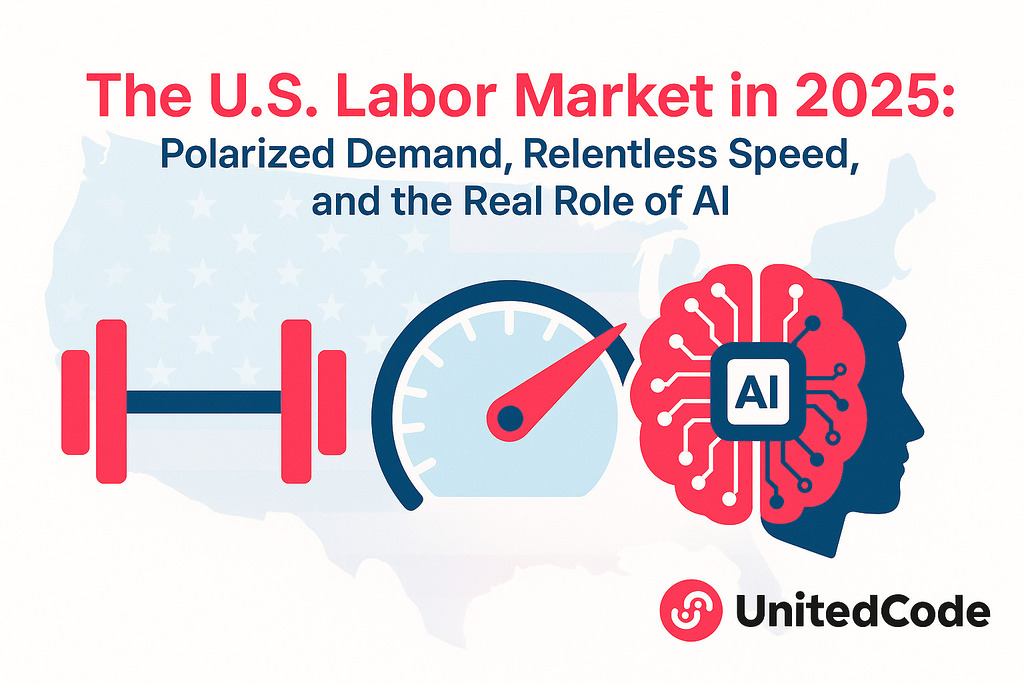How Can AI Elevate Staff Augmentation Services?
Artificial intelligence is poised to enhance the efficiency and effectiveness of staff augmentation services significantly. It achieves this by automating key operational workflows, expediting the candidate matching process, and proactively forecasting future talent requirements. Research indicates that AI-driven augmentation can slash hiring timelines by up to 50%, while simultaneously boosting candidate quality scores by 30%. This exploration into how AI can refine staff augmentation services will delve into defining AI-driven augmentation, outlining its core technological components, examining optimizations in sourcing and screening, quantifying the return on investment, and projecting future trends alongside crucial ethical considerations.
What Exactly Is AI-Driven Staff Augmentation and How Does It Operate?
AI-driven staff augmentation involves the strategic application of machine learning, natural language processing, and robotic process automation to bolster an organization’s existing workforce. By meticulously analyzing job specifications, processing resumes, and ranking candidates based on predictive skill assessments, it dramatically streamlines recruitment cycles, delivering swifter and superior placements. For instance, an AI platform can analyze 1,000 resumes in mere seconds, identifying the top 5% of suitable candidates, thereby replacing laborious manual reviews and accelerating team integration.
What Are the Foundational Technologies Powering AI in Staff Augmentation?
The core technologies driving AI-driven augmentation include:
- Machine Learning Models: These predict candidate success by analyzing historical performance data.
- Natural Language Processing: Essential for understanding the nuances of resumes and job descriptions semantically.
- Robotic Process Automation: Automates tasks like interview scheduling, sending reminders, and managing routine communications.
- Predictive Analytics: Forecasts future staffing needs by examining project pipelines and market dynamics.
- Data Visualization Tools: Provide real-time insights into candidate pipelines and fill rates through interactive dashboards.
These elements coalesce to create an integrated talent acquisition workflow, enabling organizations to transition smoothly from defining needs to onboarding candidates, paving the way for more effective sourcing strategies.
How Is AI Integrated into the Staff Augmentation Lifecycle?
AI is woven into the staff augmentation process through a structured, multi-stage pipeline:
- Requirement Analysis: AI processes job descriptions to extract critical parameters for skills, experience, and cultural alignment.
- Automated Sourcing: Automated systems scan diverse databases, job boards, and professional networks to build candidate pools.
- Screening & Shortlisting: NLP engines meticulously evaluate resumes, matching candidates against defined role criteria.
- Interview Coordination: RPA tools manage the logistics of interview scheduling, feedback collection, and communication regarding next steps.
- Performance Monitoring: Predictive analytics track the performance of augmented staff against key performance indicators.
This comprehensive integration minimizes manual handoffs, ensuring consistent process momentum and directly contributing to optimized candidate sourcing.
How Does UnitedCode Redefine Traditional Staff Augmentation with an Innovative AI-Powered Tech Hiring Solution?
Data-Driven Vetting System. UnitedCode has reimagined the hiring process with a hybrid, five-stage evaluation system that blends the insight of experienced technical recruiters with the speed and precision of AI-powered matching. Instead of leaving companies to sift through endless profiles, our approach rapidly identifies highly relevant candidates, providing rigorously vetted software developers aligned with your project’s exact requirements. What traditionally takes hours – or even days – on platforms like UpWork can be accomplished by UnitedCode in minutes, without sacrificing quality or reliability.
Insight-rich Format of Software Engineer Resume. Leveraging machine learning and advanced data analytics, we’ve designed a unique software engineer resume format that captures each step of the evaluation process in a structured, transparent way. Clients receive not only candidate profiles but also a detailed record of how skills and experience were validated, including
- The ratio of general experience and direct commercial work experience
- Types of applications being developed / the years of experience working with
- A percentage distribution of the specific weight of using a particular technology on each project.
Please find the example below to ensure the uniqueness of our software engineer resume format, created through the implementation of ML algorithms.
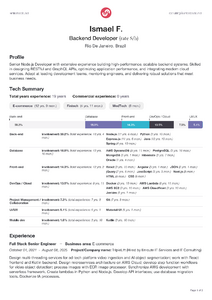
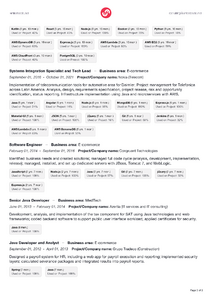

This clarity allows decision-makers to move quickly and confidently. With a process refined over years, UnitedCode delivers first candidate matches within just 7 days – dramatically faster than TopTal and most traditional staffing providers.
What truly sets UnitedCode apart is our commitment to building partnerships, not just filling roles. Beyond rapid matching, we provide transparent pricing, full operational support, and risk-free trials to ensure a seamless experience for clients and developers alike. By integrating AI with human expertise, UnitedCode transforms staff augmentation from a transactional service into a scalable, trustworthy solution – helping companies reduce hiring friction, cut costs, and launch projects faster with confidence.
How Does AI Enhance Efficiency in Candidate Sourcing for Staff Augmentation Services?
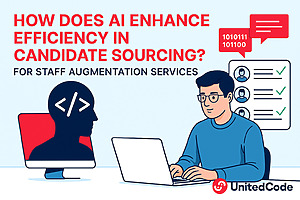
AI has become a game-changer in staff augmentation services, transforming how companies identify and connect with top talent. Traditional sourcing methods often rely on manual searches or limited databases, which can slow down hiring and miss high-quality candidates. By contrast, AI in staff augmentation services enables recruiters to scan multiple data repositories in real time, apply smart filters to match specific role requirements, and adapt searches based on feedback loops. This ensures not only speed but also precision in finding the right professionals.
More importantly, AI-driven sourcing expands access to a broader pool of vetted software developers, reaching talent that might otherwise remain undiscovered. These tools, like UnitedCode, reduce cycle times dramatically, allowing businesses to fill roles in days rather than weeks, while also improving the quality of candidate shortlists. As a result, organizations can elevate staff augmentation services from a reactive process into a proactive strategy – one that consistently delivers top-tier developers with the right skills, cultural fit, and readiness to perform.
What AI Tools Streamline Candidate Sourcing Operations?
The following AI tools are instrumental in optimizing sourcing operations:
- Semantic Search Engines: These understand context and variations in search queries, including synonyms.
- Talent Mapping Bots: These systematically scan public profiles and internal databases to identify passive talent.
- Automated Outreach Systems: These generate personalized engagement messages at scale.
- Skill Graph Visualizers: These map the intersections of candidate skills with role requirements.
- Market Intelligence Platforms: These monitor salary trends and talent availability across different geographical regions.
- UnitedCode AI-vetting solution with a structured, insight-rich software engineer resume format: A five-stage tech candidates screening process analyzes 2,000+ technologies, verifies real-world skill usage, and standardizes candidate data for apples-to-apples comparison—driving 98% accuracy in vetting.
Collectively, these tools function as a proactive sourcing engine, ensuring timely access to both active and passive candidates.
How Does AI Accelerate Time-to-Hire Through Automated Sourcing?
Automated sourcing dramatically shortens the time-to-hire by instantly searching numerous platforms, ranking candidates against specific role criteria, and initiating contact without manual intervention. This continuous generation of candidate pipelines means hiring managers receive pre-vetted profiles within hours, not days, potentially reducing the traditional sourcing timeline by up to 40% and allowing projects to commence on schedule.
How Does AI Ensure Superior Quality Candidate Pools?
AI guarantees higher quality by employing predictive scoring models that correlate candidate attributes—such as skills, certifications, and indicators of cultural fit—with historical placement success. By assigning weighted values to factors like project suitability and retention likelihood, it generates candidate shortlists that consistently outperform those selected manually, thereby reducing post-hire attrition and enhancing long-term workforce stability. We, at UnitedCode, implemented AI into our vetting system to boost the selection of software developers and convert software engineer resumes into verified, structured skill data.
How Does AI Supercharge Candidate Sourcing in Staff Augmentation?
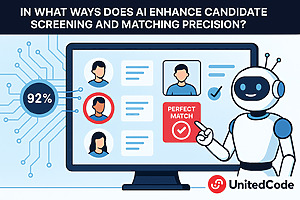
In today’s competitive landscape, accurate screening is one of the most critical steps in talent acquisition. Relying solely on manual reviews or generic assessments often leads to overlooked skills, unconscious bias, or mismatched hires. By contrast, AI elevates staff augmentation services by combining structured, rule-based filters with adaptive algorithms that learn from placement outcomes and candidate performance over time. This ensures that the screening process becomes smarter and more precise with every cycle, increasing both efficiency and reliability.
Beyond filtering resumes, AI-driven workflows analyze technical assessments, coding tasks, and even communication cues from candidate interviews to provide a fuller picture of each applicant. This approach not only identifies the best-fit professionals but also ensures access to vetted software developers whose skills and experience align with evolving project demands. As a result, companies reduce the risk of bad hires, improve team performance, and accelerate delivery while maintaining fairness and transparency in their recruitment process.
Automated screening workflows typically involve the following steps:
- AI analyzes resumes to extract key role-relevant information such as skills, certifications, and years of experience.
- Chatbot assessments conduct initial evaluations of technical and behavioral competencies, scoring responses against established benchmarks.
- Video analysis tools assess communication style and presentation skills, generating suitability scores.
- Continuous learning systems dynamically adjust screening criteria based on feedback from hiring managers.
This automation liberates recruiters to concentrate on high-value activities like building candidate relationships and conducting in-depth interviews.
What Are the Quantifiable Benefits and ROI of AI in Staff Augmentation Services?
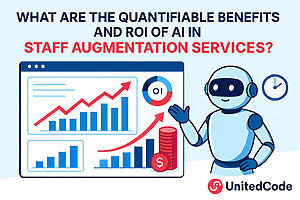
AI delivers tangible benefits and a compelling ROI by reducing operational expenses, accelerating placement timelines, and improving satisfaction levels for both clients and candidates. These advantages translate directly into significant cost savings, enhanced productivity, and stronger collaborative partnerships.
How Does AI Contribute to Reduced Operational Costs in Staffing?
Automation lowers overhead costs by minimizing the need for manual recruiter hours, decreasing reliance on external agencies, and eliminating repetitive administrative tasks.
| Process Phase | Automation Level | Efficiency Impact |
|---|---|---|
| Candidate Sourcing | High | 50% reduction in recruiter hours |
| Resume Screening | Fully Automated | 70% decrease in manual review time |
| Interview Coordination | Bot-Driven | 60% faster scheduling and feedback loop |
| Onboarding Documentation | RPA Managed | 80% reduction in paperwork errors |
What Effect Does AI Have on Time-to-Hire and Overall Productivity?
A comparison between traditional and AI-driven staffing strategies reveals a significant leap in productivity:
| Approach | Average Time-to-Hire | Productivity Gain |
|---|---|---|
| Traditional | 45 days | Baseline |
| AI-Driven | 20 days | 40% faster onboarding |
| ML-Optimized | 15 days | 55% reduction in idle time |
How Does AI Enhance Client and Candidate Satisfaction?
AI improves satisfaction by offering transparent status updates, delivering personalized candidate experiences, and facilitating quicker feedback cycles. Clients benefit from predictable staffing outcomes and data-driven insights, while candidates appreciate tailored role matches and streamlined communication, leading to increased engagement and higher net promoter scores.
What Are the Future Trajectories and Hurdles for AI in Staff Augmentation?
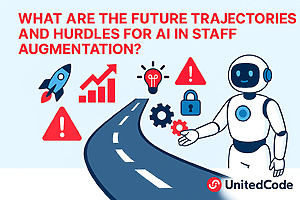
Emerging AI trends point towards deeper automation, autonomous candidate engagement, and sophisticated predictive workforce planning. However, ethical considerations, data privacy concerns, and the complexities of integration present ongoing challenges for responsible AI adoption.
How Will AI Continue to Reshape Talent Acquisition?
Future advancements will include agentic AI capable of autonomously managing hiring campaigns, generative models for crafting highly personalized outreach, and digital twin simulations for predicting team dynamics. These innovations will drive hyper-personalized talent journeys and strategic workforce optimization.
What Ethical and Practical Challenges Does AI Introduce?
Key challenges include:
- Ensuring algorithmic fairness and actively mitigating unintended biases.
- Protecting candidate data privacy within predictive analytics frameworks.
- Seamlessly integrating AI platforms with existing legacy HR systems without disrupting operations.
- Establishing transparent audit trails for AI-driven decision-making processes.
Addressing these critical issues necessitates multidisciplinary governance and robust change management strategies.
How Can Organizations Prepare for AI-Driven Staffing Innovations?
Organizations can proactively prepare by:
- Assessing Readiness: Conducting thorough process audits to pinpoint opportunities for automation.
- Building Data Foundations: Establishing clean, structured datasets for talent and performance metrics.
- Developing Governance Frameworks: Defining clear ethical guidelines and establishing oversight committees.
- Piloting Incrementally: Implementing AI modules in controlled environments before a full-scale rollout.
- Upskilling Recruiters: Training teams on AI interpretation, managing exceptions, and fostering strategic partnerships.
These preparatory steps lay a solid groundwork for scalable and ethically sound AI-powered staffing solutions.
Staff augmentation powered by AI transforms conventional recruitment into a strategic asset, delivering faster hires, superior candidate alignment, and demonstrable cost savings. By embracing advanced algorithms, predictive analytics, and continuous learning cycles, organizations can achieve unprecedented levels of operational efficiency and cultivate resilient, future-ready teams.
Conclusions
Artificial intelligence is no longer just an emerging trend in recruitment – it is reshaping the very foundation of staff augmentation services. From sourcing to screening, AI is proving to be a transformative force, helping organizations move beyond outdated, manual processes that are slow, inconsistent, and often prone to bias. By automating repetitive tasks, analyzing large volumes of data, and continuously learning from placement outcomes, AI creates an agile hiring environment that delivers results faster, cheaper, and with greater accuracy.
One of the clearest benefits lies in candidate sourcing and talent acquisition. Traditional methods are often limited by the recruiter’s personal networks or the inefficiencies of large freelance platforms. In contrast, AI-driven sourcing tools broaden access to global pools of vetted software developers, ensuring that only the most relevant profiles surface. Intelligent algorithms cut through noise, shorten cycle times, and provide hiring managers with candidate shortlists that are both wider in reach and higher in quality.
Equally important is the precision AI brings to screening and matching. By combining rule-based filters with adaptive learning, AI ensures that candidate capabilities align closely with project requirements. Automated assessments, behavioral analysis, and even insights from candidate interviews contribute to a fuller evaluation. This dual approach minimizes bias, strengthens cultural fit, and enhances retention – ensuring that businesses build resilient, future-ready teams instead of making short-term hires.
This is where UnitedCode redefines the model. Our hybrid five-stage evaluation system combines seasoned recruiters’ expertise with AI-powered vetting to deliver transparent, structured, and trustworthy results. With a unique software engineer resume format, risk-free trials, and initial matches provided in as little as 7 days, UnitedCode helps companies accelerate hiring without sacrificing quality. More than a staffing vendor, we act as a partner – offering full operational support, cost transparency, and the confidence that every hire is both technically skilled and culturally aligned.
Ultimately, the integration of AI allows companies to elevate staff augmentation services from transactional to strategic. With UnitedCode, this isn’t just theory – it’s a proven, scalable solution that reduces friction, lowers costs, and drives faster product launches. Organizations that embrace this AI-powered approach today will not only optimize hiring but also gain the competitive edge required to thrive in the future of work.
Prepared and written by Dan Bohatyrchuk, Founder and CEO of UnitedCode, Seasoned Entrepreneur, Product Engineering Manager, Fractional CTO, and Startup Advisor with 20+ years of experience
Frequently Asked Questions
1. What is AI in staff augmentation services?
AI in staff augmentation services uses technologies like machine learning and natural language processing to automate sourcing, screening, and candidate matching. This speeds up hiring, reduces manual bias, and ensures that only the most relevant and vetted software developers are presented for consideration.
2. How does AI improve candidate sourcing?
AI tools analyze thousands of resumes and profiles across multiple databases in seconds, applying intelligent filters to highlight the most suitable matches. This reduces sourcing time, expands access to global talent, and consistently generates higher-quality shortlists for faster decision-making.
3. In what ways does AI enhance candidate screening and matching precision?
AI integrates rule-based filters with adaptive learning that refines criteria over time. It evaluates resumes, technical skills, and even data from candidate interviews to build accurate profiles. This minimizes bias, ensures cultural fit, and delivers candidates aligned with evolving project needs.
4. What ROI can businesses expect from AI-powered staff augmentation?
Companies typically see faster time-to-hire, reduced recruitment costs, and better retention. By automating repetitive tasks, AI lowers operational overhead, while predictive analytics improve role alignment. The result is measurable ROI in the form of cost savings, productivity gains, and stronger team stability.
5. What are the challenges of using AI in staff augmentation?
While AI offers major benefits, it introduces challenges such as data privacy concerns, integration with existing HR systems, and the need to ensure fairness in algorithms. Overcoming these hurdles requires clear governance frameworks and ongoing monitoring to keep recruitment both efficient and ethical.
6. How does UnitedCode use AI to redefine staff augmentation?
UnitedCode combines expert recruiters with AI-driven screening in a unique five-stage process. Our solution delivers vetted software developers within 7 days, with transparent pricing and structured candidate profiles that reinvent the software engineer resume. This hybrid model provides faster, more reliable hiring compared to traditional platforms like TopTal or Upwork.
